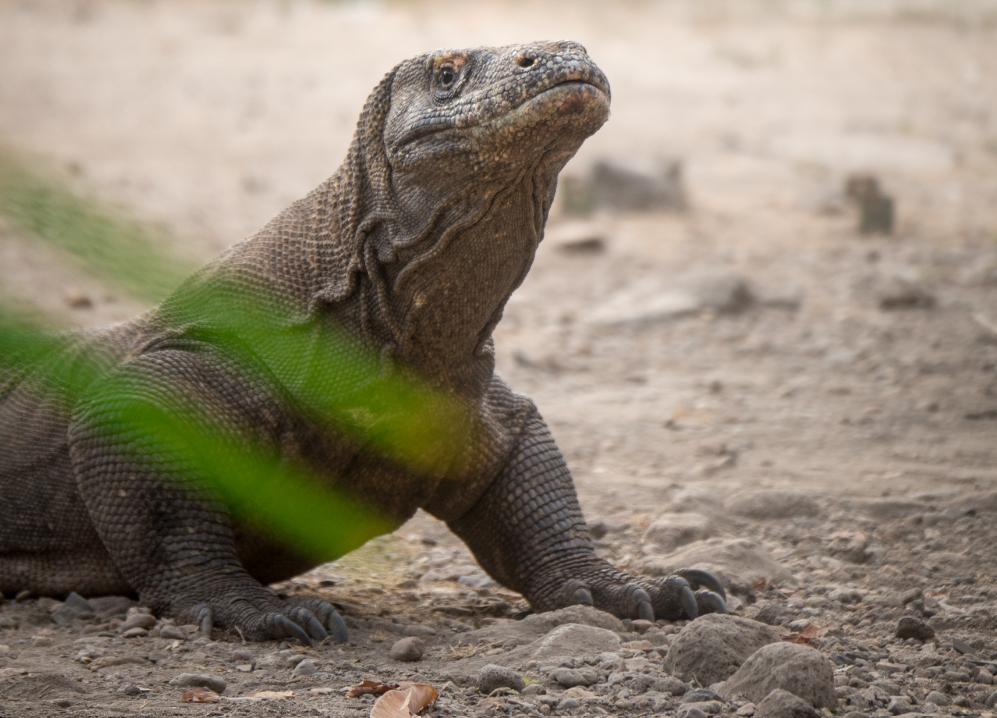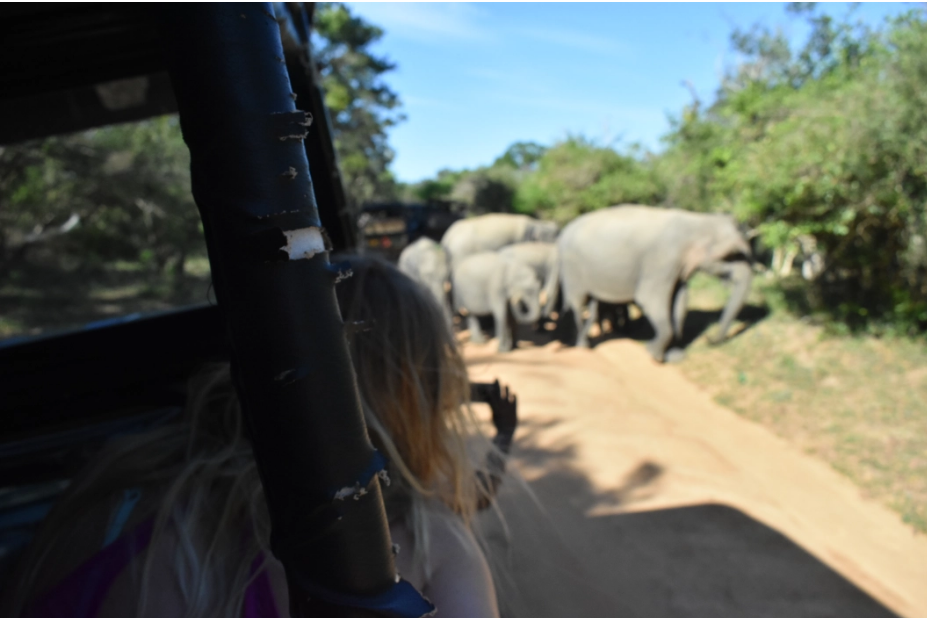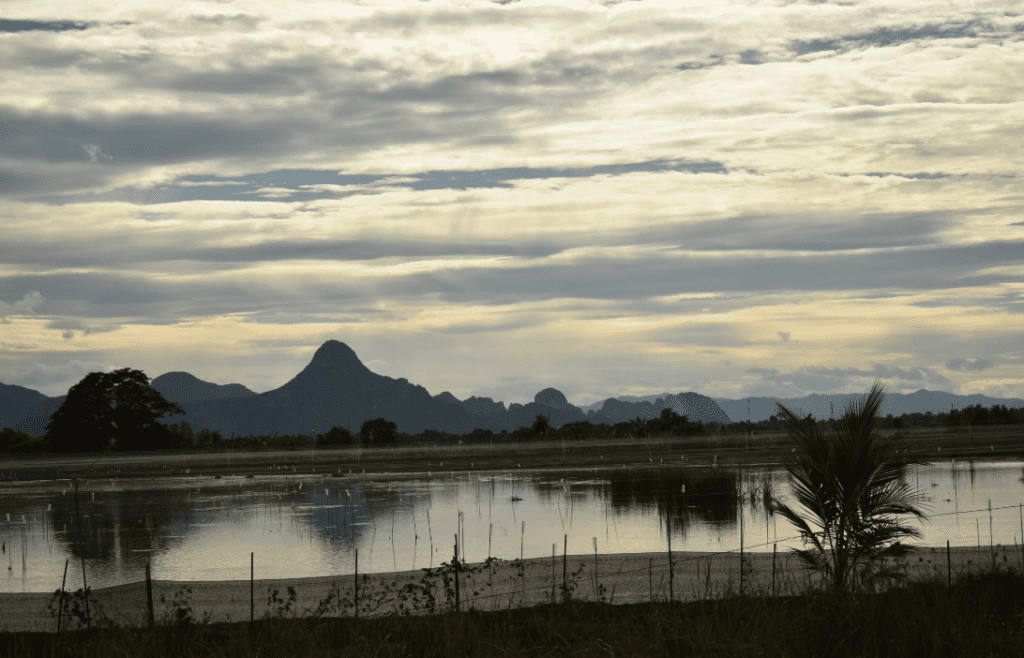
Phetchaburi is a town immediately to the south-west of Bangkok, but enough things exist to make one feel like they’ve finally escaped the hoo-ha that comes with a concrete and wire jungle. Phetchaburi is surrounded by a pretty decent selection of wildlife attractions (even more so than Chiang Mai, I might add), but the town itself is pretty likeable too. There’s a range of cultural attractions to make this more than a launch pad, and any faith you might have lost in Thailand in the more mercenary parts of the south will be rapidly restored here. It hasn’t got great beaches, but that generally keeps the Patong Beach rif-raff moving on.
•
Get off the train, get in the guesthouse, get in the shower, you know the drill. Once that bit of business is over, the sun has set and I begin my nightly foray into town for some dinner. Traffic is calm at this time; not non-existent, but I am able to return to my careful ways of looking left and right and crossing with nobody coming in either direction, rather than the ballsy stare-down or mad dash that was essential for getting anywhere in Bangkok. Most of the shops are closed with sliding metal shutters, whilst those that keep their lights on for business or for a rendez-vous with friends secure their awnings in place against the breeze with filled water bottles.
The small junction where the guesthouse is situated seems to be the focal point of farang activity in the town, and that’s more than enough room to accommodate the lot of us. I approach a food stand just nearby, and the lady is overjoyed to have me as a customer. She poses as many questions as her English will allow, and I attempt to pepper my responses with any of the five Thai words I know.
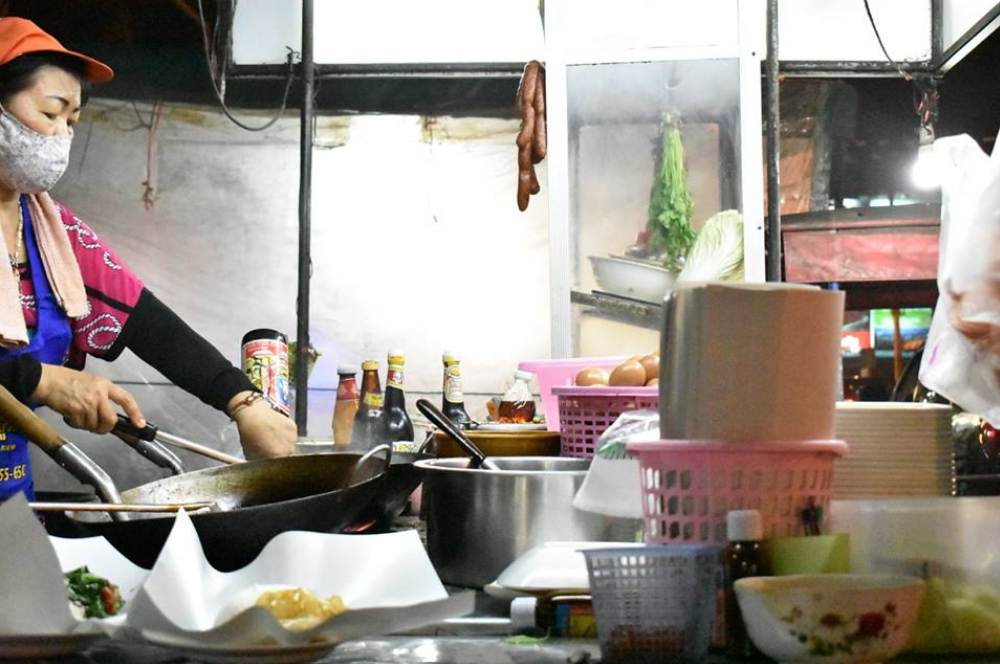
I spend the next day cycling around town, and am amazed at how unique the temples and attractions are. Thai temples have been feeling a bit cut-and-paste at this point, but Phetchaburi has turned temple design into an art. Wat Mahathat is like Wat Arun in Bangkok, except pure white and not covered in scaffolding, Wat Kampaeng Laem contains a set of ancient Khmer ruins (it is indeed hard to believe this was at one point part of Cambodia) and Wat Yai Suwannaram is a long temple on teak pillars situated beside a pond full of carp. Tham Khao Luang Cave is a subterranean temple that turns its darker corners into a neon rainbow, to illuminate the silhouette of a Buddha statue or shrine, yet doesn’t dare to interrupt the natural lighting that seeps in through the cracks. If one arrives at just the right time, the rays of sunshine are cutting-edge sharp.
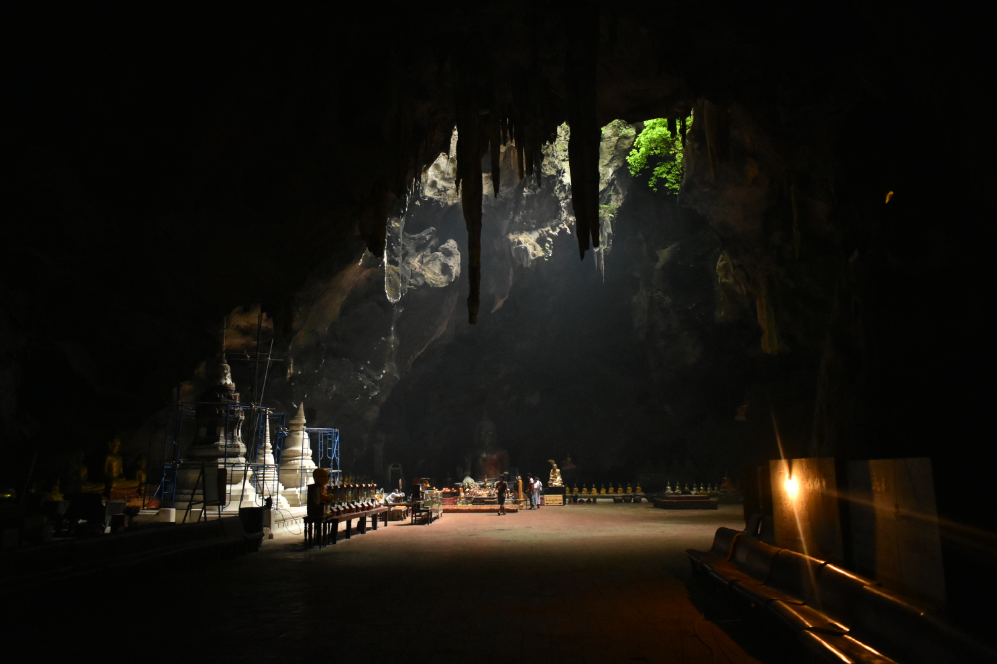
I take a stroll along the canal the next morning, where geezers play chess and take naps on benches. Water monitors slither through the muddy brown river, one with a toad in its mouth, and further up I find a tiny black snake fighting the current. I hop back on the bike and this time venture east towards the coastline. I’m attempting to reach the salt-flats, one hour away, a journey most would call me a madman for attempting by bike. And they’re probably right. Nevertheless, I make it and I march across the bunds, raised lines of earth that keep my feet dry. Storks, waders and terns are everywhere, and it would be even busier in February when the world’s most endangered bird refuels on its way from Australia to Russia; the spoon-billed sandpiper. At this time, birdwatchers flock to see it (pun very much intended) and some of the bunds get turned into mini observatories with their powerful telescopes. To be fair, one of those would have come in handy given how skittish half the denizens are when I get to within a hundred metres.
This liberal interpretation of “too close for comfort” extends further; at one point, a pair of black-winged stilts start screeching at me, swooping down then flying back up at me. I understand when I spot their chicks taking cover in the cracks of the crumbling smaller bunds, and swiftly move on. However, they follow me for a good ten minutes, continuing their ritual of screeching, dive-bombing and then regaining altitude once within two metres. I suppose this is their way of politely telling me to fudge off but the more I continue to comply, the more I start to think the same. Eventually, they put two and two together and realise they’re being melodramatic with their defensive strategy. Despite my low-season timing, I still manage to add quite a few new species to my list.
I come back under a hail of rain. The sight of the grey silhouettes of palm trees in the mist is something to behold, but that’s not easy when neither your backpack nor your precious gear are waterproof. Thus, I take shelter in a roadside shop. Now, if the lady running a stand near place de l’homme blanc was intrigued by a guest of my complexion, one could imagine the drama I could create this far out. The selfies and chatter shelter me from boredom and the downpour, and when I try to pay for the raspberry fanta it is the first time I’ve haggled to pay a higher price than what they suggest.
Refreshed from the more enjoyable kind of shower, I treat myself to a seafood dinner, it being my last supper in Thailand. That’s probably putting it in a bit of a chique light, it’s a noodle dish with fish, squid and octopus and it’s at a street food stand same as usual, but it’s seafood nonetheless. I ask the cook how much, and there’s a translation barrier, so I ask “Thirty? Forty? Fifty?”, holding up three, four and five fingers respectively. The message is coming across, along with the fact that I know sweet fanny Adams as to the cost, and they respond; “thirty”. Unbelievable. Such honesty is so difficult to come by in Thailand these days.
Phetchaburi is far from perfect. Macaques loiter in temple car parks, all of them aggressive, a few of them obese. The huge car park to the caves is eerily empty save for the few small songthaews that shuttle visitors up and down the steep hill – the authorities blocked off access to regular cars a while back to throw a bone to the drivers. And there is single block of one of the town’s major traffic routes that is one-way for no apparent reason. For all its faults, though, I have absolutely no qualms in calling Phetchaburi the best town in Thailand. I’d never, until now, understood the travel writer’s dilemma of whether or not to reveal a place lest word gets out and the serenity is ruined. I just have to hope the lack of beaches protects me from making a huge mistake…
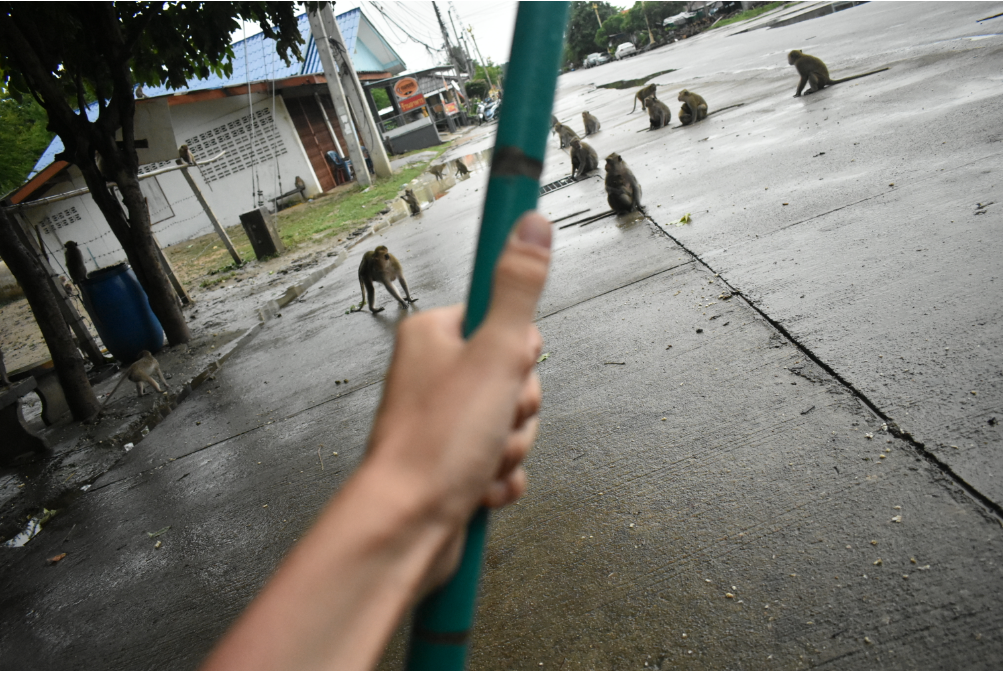
•
-The guesthouse I stayed at was JJ Home Phetchaburi. The rooms may look a bit dated, but they’re comfortable, don’t get too stuffy at night and the shutters keep out any sunlight that might have for so long robbed you of a good lie-in. There’s a nice selection of books and beers in the common area down below, and you’re sure to strike up a conversation with someone. It’s not the most spick n span joint in Asia, but it’s cheap. As in, £3 cheap. Given the hospitality of the owners and staff, and the whole retro feel, it’s more than a fair trade.
Other than what I’ve mentioned…
What wildlife is there here?
In the sea itself, you can go whale-watching. Surprising though it may sound, bryde’s whales also recharge their batteries on anchovies here (this time September-December). To the west is Kaeng Krachan NP, which has been overtaken by Khao Yai as the place everyone goes to for a wildlife fix in Thailand. That could have something to do with the fact that it’s part of a chain of jungles on the border with Burma that host the possibility of contracting malaria and security concerns at some point in time, but these jungles are also home to some of Thailand’s best wildlife. However, much of it is less habituated to human presence so you might need to look harder. Furthermore Kaeng Krachan is one of the few parts of Thailand where a 4×4 may be needed, especially in the rainy season. Just outside JJ Home is Rabieng Guesthouse, who can arrange trips there. I’ve yet to do this one, but I couldn’t be happier to have an excuse to return to Phetchaburi!
What else is there to see?
Just out of town is a historical park on a hill sometimes used by the king as a summer residence, but be warned; monkeys there are apparently so aggressive that locals have started up a sort of “guard for hire” business to protect travellers. Another royal palace is the German style Wang Ban Poun, designed by a German architect and now used as a museum by the army. Make sure to bring your passport to this one.
How much does stuff cost?
Because my accommodation was so cheap, I could usually get by comfy-cosy on £9 per day, including the cost of hiring a bicycle. Most of the attractions I mention here are free, apart from the museum and historical park which cost 50 and 150 THB respectively.



